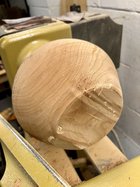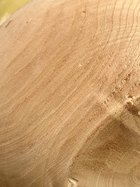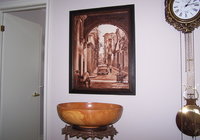-
It's time to cast your vote in the December 2025 Turning Challenge. (click here for details) -
Congratulations to Pat White for "Sicilian Mosaic" being selected as Turning of the Week for December 29, 2025 (click here for details) -
Welcome new registering member. Your username must be your real First and Last name (for example: John Doe). "Screen names" and "handles" are not allowed and your registration will be deleted if you don't use your real name. Also, do not use all caps nor all lower case.
You are using an out of date browser. It may not display this or other websites correctly.
You should upgrade or use an alternative browser.
You should upgrade or use an alternative browser.
Name that wood
- Thread starter Michael Edelman
- Start date
Perhaps honey locust. When turned wet, I've compared the smell to mulling spices.
Perhaps honey locust. When turned wet, I've compared the smell to mulling spices.
This comes from a stash that’s been drying for many decades, so probably not.
- Joined
- Apr 27, 2004
- Messages
- 9,308
- Likes
- 6,080
- Location
- Lakeland, Florida
- Website
- www.hockenberywoodturning.com
Can’t see it too well Maybe sassafrass?.
Maybe sapele how heavy does it feel? Sapele is on the lighter side.
Can’t see it too well Maybe sassafrass?.
Attachments
That’s a definite candidate. I don’t remember it being very heavy, and it fits the descriptions I’ve read about the scent, being hard on cutters, and being very prone to tearout.Maybe sapele how heavy does it feel? Sapele is on the lighter side.
- Joined
- Apr 27, 2004
- Messages
- 9,308
- Likes
- 6,080
- Location
- Lakeland, Florida
- Website
- www.hockenberywoodturning.com
Where did it come from?That’s a definite candidate. I don’t remember it being very heavy, and it fits the descriptions I’ve read about the scent, being hard on cutters, and being very prone to tearout.
Sapele is a tropical hardwood similar to mahogany. I get cabinet shop cut offs through a club member
These tool handles are unfinished Sapele. The top one is newer.

I think Hockenbery is likely right. I have never seen sapele with bug/worm holes, but sure it is possible. If you sand the end grain to 220 and take a 10X photo, you can go to the wood database and compare.
Last edited:
Honey Locust would be my first guess as well, but the heartwood is rarely bothered by insects. Still, I would go with honey Locust.View attachment 46606
Anyone recognize this wood? It has a spicy aroma, deep orange color, it’s full of tiny worm holes, and it dulls tools really fast.
Now that Lane said honey locust, I would agree with that. I don't often get much of it. The wild version has long thorns, like 10 inches or so, that can go through tractor tires. The tame version, called a moraine locust does not have the thorns and grows a lot bigger. It is pretty hard, and the pores are very open, so you can pretty much see through it. Wet sanding with oil will plug up the holes.
robo hippy
robo hippy
I've looked at the pictures of this turning, and my initial reaction was Honey Locust but for only a few seconds.
The grain is off and having looked a few more times, I'm quite sure it is something else, BUT I don't know what else it is.
Other than the look and colors of the wood, I can't believe one could make such a rough surface on Honey Locust, it is hard wood and cross linked like Elm, also Honey Locust is not going to get soft or rot in a few years as it will last a long time as a fence post for instance, also a reason you will not find wood worms in he wood, either sap or heartwood.
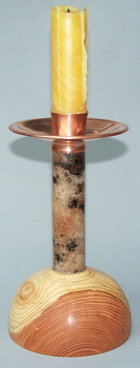
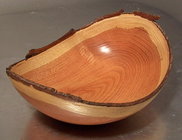
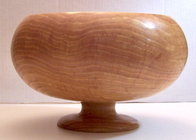

The grain is off and having looked a few more times, I'm quite sure it is something else, BUT I don't know what else it is.
Other than the look and colors of the wood, I can't believe one could make such a rough surface on Honey Locust, it is hard wood and cross linked like Elm, also Honey Locust is not going to get soft or rot in a few years as it will last a long time as a fence post for instance, also a reason you will not find wood worms in he wood, either sap or heartwood.




Two of the best wood identifiers on the internet hang out over on woodbarter.com. You’ll want to do want William said about getting a sanded end grain photo though. The rough turning pic makes it too hard to tell for sure, but I agree it’s neither honey locust nor sassafras.

